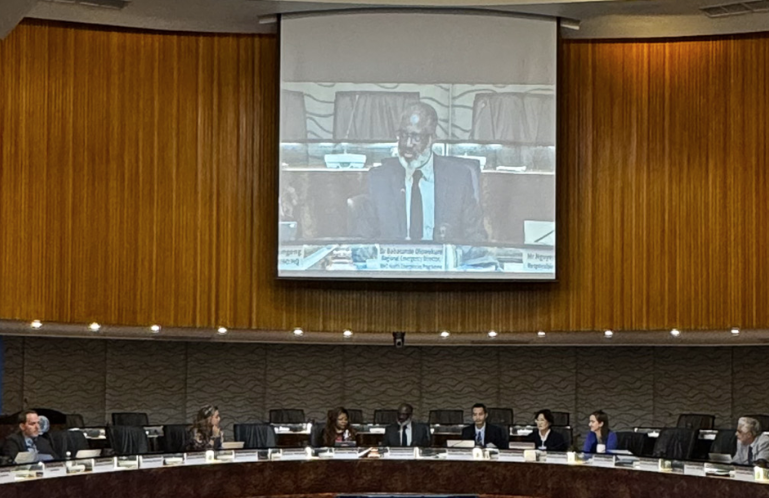
WHO workshop builds country capacity for developing National Action Plans for Health Security
NAPHS
Western Pacific Region
National Action Plans for Health Security, or NAPHS, outline a country’s strategy for building capacity to prevent, detect and respond to public health emergencies. They enable countries to strengthen their surveillance and response systems, improve laboratory capacity, develop national immunization registers, enhance risk communication, and increase the readiness and capacity of their health workers. NAPHS employ a whole-of-government approach, involving multi-stakeholder groups, including government agencies, United Nations agencies, nongovernmental organizations and the private sector.
To support Member States in the important process of developing NAPHS, the World Health Organization (WHO) in the Western Pacific Region facilitated a capacity-building workshop from 12 to 14 March 2024 for countries and areas in the Region. During the workshop, representatives from 12 participating Member States − Cambodia, Fiji, the Lao People’s Democratic Republic, Malaysia, Mongolia, Palau, Papua New Guinea, the Philippines, Samoa, Tonga, Vanuatu and Viet Nam − had the opportunity to practise the NAPHS approach. They identified the most critical priorities for health security and incorporated these into a capacity-building plan that is costed for implementation.
During the process of developing NAPHS, countries incorporate recommendations from International Health Regulations (2005) (IHR) tools, including IHR States Parties Self-Assessment Annual Reporting, Joint External Evaluations, simulation exercises and after-action reviews.
Preparing for future pandemics
In his opening remarks, Dr Babatunde Olowokure, WHO Regional Emergency Director for the Western Pacific, emphasized the importance of using capacity-enhancing tools such as NAPHS to identify and address gaps in health security. “The pandemic serves as a powerful reminder that health systems need to not only be prepared for, but also, ready to respond to public health emergencies. Emergency preparedness requires sufficient and predictable investment in capacities. Such investment reduces the devastating and disruptive impact of future epidemics, pandemics and other public health emergencies,” he said.
Dr Stella Chungong, Director of Health Security Preparedness in WHO’s Health Emergencies Programme, praised countries in the Western Pacific Region for the significant strides they have already taken towards strengthening health emergency preparedness and response capabilities. “Since 2016, there have been 16 Joint External Evaluations, 21 after-action reviews, eight intra-action reviews, 136 simulation exercises, five national bridging workshops and seven workshops for National Action Plans for Health Security in the Region − attesting to the commitment of Member States towards a safer, more resilient world,” she said.
Learning from each other
The workshop enabled peer-to-peer exchanges, allowing participants to share and learn from one another. Representatives from countries that already have a NAPHS shared effective approaches and strategies with other countries that are currently developing their NAHPS. Participants noted that securing high-level commitment is critical to ensuring that adequate resources are earmarked for implementation. Another challenge that countries have faced in developing their NAHPS is the lack of a standard implementation and monitoring process. To address this, WHO will launch an e-NAPHS platform, which is an online planning tool designed to streamline the development and monitoring of NAPHS activities.
WHO thus provides guidance and technical support to countries to integrate NAPHS within national efforts to strengthen resilient health systems. The development of NAPHS is also a priority in the new Asia Pacific Health Security Action Framework, which aims to enhance the core IHR capacities, providing an important foundation for pandemic preparedness.
Read original article here.